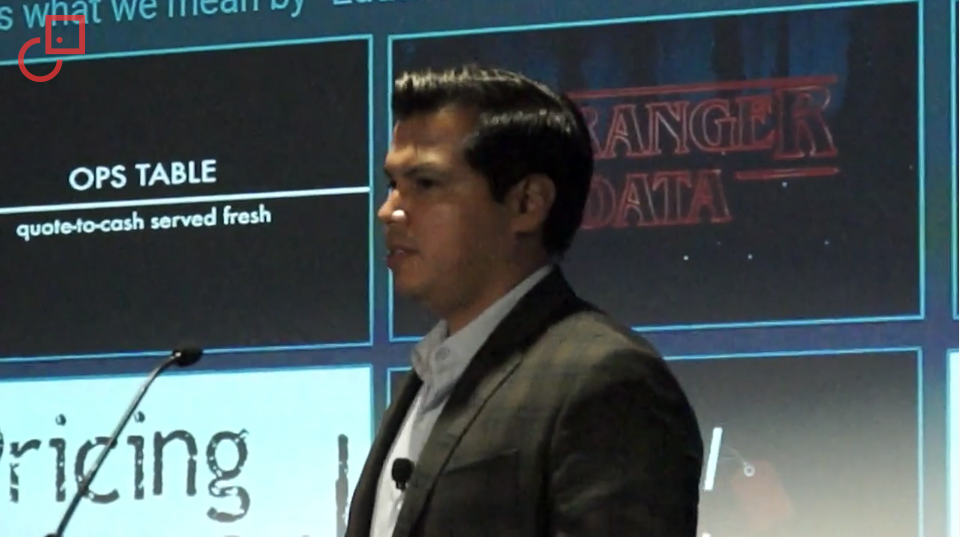Content is about starting conversions: it doesn’t replace a conversion. More does not mean better (necessarily).
Steve Mayernick, Head of Product Marketing at Guru, has compared the effectiveness of relying on content completely, without proper strategy as handing out flyers indiscriminately to passers by in the high street.
People may take one to appear polite, but without any context about why it’s relevant to them they may give it a cursory glance - but then it ends up in the trash. Think about how much content we’re bombarded with every day.
- On WordPress alone, there’re over 2.75 million blog posts published every single day.
- Every second, on average, we send around 6,000 tweets on Twitter.
- Google crawls and indexes around 80 billion pages a day.
- Email users send and receive 300 billion messages every day.
- 300 hours of video are uploaded to YouTube every minute.
No wonder we’re choosy about what gets our attention.
What do we mean by sales content?
Sales content includes both customer-facing and internal enablement content and both have the potential to impact on lead gen and revenue gen performance - but both have the potential to be mistargeted, turning this aspect of sales enablement into its nemesis: sales hindrance.
Internal enablement content
One of core pillars of sales enablement, a good content strategy helps reps to better understand their product portfolio; reinforce training and coaching initiatives; engage customers and effectively communicate benefits; put the offering into context and encourage them to imagine how the product could be implemented within their business and help them to meet their objectives
A battlecard that provides concise answers to common customer queries and explains competitive differentiators; an objection-handling script that addresses pushbacks effectively; a newsletter that highlights and celebrates achievements and encourages peer-to-peer knowledge-sharing; bite-sized videos that keep key training points front-of-mind.

Customer-facing content
External content includes assets that customers can take away to read or watch in their own time, and which offer real value: a detailed industry report that gives them insights that they can apply to their own work and which back up the points you’ve already discussed; an explainer video that allows them to put the product you’ve discussed into context and help them to fully understand how it would benefit their company prior to your next meeting; a case study or testimonial that provides evidence and reassurance of the real-life value you can provide.
This kind of customer-facing content is effective when it empowers them to make their own decisions with material that educates, inspires and entertains, rather than bombarding them with pushy, interruptive sales bumpf that they perceive has little relevance to them (like the flyers that got unceremoniously trashed earlier).
Not just what, but when
And it’s not just the right kind of content that matters either; timing is all-important: Are you providing people with the right content at the right time? Are they researching a new purchase, or buying already? Is it the first time they’ve heard of your product or company?
Is sales content being delivered at the optimum time? Will it help sales reps if your email marketing campaign is promoting a brand-new product if their current focus is building up a pipeline through selling an established product? Are they really going to use a new set of consumer personas that are off-key with the customers they’re speaking to?
Collaborate
Who wants a silo of content that nobody values or uses? Not the content creators, not sales reps and certainly not the customer.
In sales enablement, we often talk about the concept of sales and marketing needing to be aligned and this is never more so the case when it comes to content planning and production.
It’s your role to work with marketing to ensure they understand that reps need to be involved in the content planning process, what they need and use (and what they don’t) and what resonates with customers. This means in terms of ongoing input and feedback, and this can mean being prepared to manage egos among professional writers.

Creativity, content marketing, keyword research, corporate messaging, monitoring open rates and bounce rates are all really important in establishing the kind of content to create - but it’s often the case that marketers and copywriters don’t have direct contact with the people who are reading or otherwise consuming it - whether that’s sales reps or potential customers.
Taking input, and even direction, from colleagues who regularly interact with customers and potential leads, about the most commonly-asked questions, concerns or reservations raised, what content format helps them to best understand will lead to rich content creation, better planning and a more targeted approach.

What content do they regularly reference when speaking to customers? How can it be better?
Importantly: is it easy to find and access? (Not just what, but where).
I’ve made the assumption here that it’s the marketing team who generate the majority of your content (at least officially), but you may need to collaborate and coordinate more widely if people across the business are creating content, for example, sales ops, leadership, HR, line managers, sales reps themselves. For a truly streamlined content strategy, and to avoid ‘random acts of content creation’ that confuse instead of enable, you need buy-in from everyone.
Steps for creating useful content
What’s the problem?
As a content creator myself, I often think about problems being the best source of inspiration - because helping people to solve them provides a basis for offering useful content.
Good sales content focuses on building relationships by adding value. Identify the problems and challenges faced by your audience: what do they feel is holding them back from achieving success, or stopping them from reaching their goal?
Determine how to provide them with information that offers a solution or a means of improving their circumstances, and you’ve unlocked the basis of your strategy
Identify what you want to achieve
Not just what, but why.
What messages do you want to communicate? What behavior or actions do you want to drive? How will you measure success? Your content objectives need to be aligned with your business’ overall commercial goals and support your wider sales and marketing strategy.
Know who you’re writing for
If you miss out any part of the planning and research stage, make sure it’s not this bit. To hit the mark with your content, you really need to know your audience - be they your colleagues or your customers - inside out. Every piece of information you can gather about your audience is gold dust that will help you to:
- Identify their values, goals, challenges and interests.
- Create relevant, engaging content that meets their needs.
- Deliver it in the optimum format, place and time.
Build a narrative
Not just what, but how. (I’m warming to this theme now).
People vary in their learning styles; some remember things better by putting what they’ve learned into practice (kinesthetic), while others fall into the visual or auditory camps. Attention spans are getting shorter (remember the bullets at the beginning about getting how much information we receive each day? Bet you don’t).
A 2015 Microsoft study found that since the onset of the mobile revolution, around the year 2000, the average attention span dropped from about 12 seconds to eight seconds - that’s less than a goldfish.
However, storytelling is a technique that reaches all learners - some studies say that facts are 20% more likely to be remembered if told through stories, as it gives a more engaging and interactive experience. Engaging people’s imagination with a narrative draws people in and helps them become involved and invested.
Simply put, it means sharing narratives about your business – its objectives, history, people, plans for the future, and perhaps the odd anecdote – that demonstrates core messages and values and brings your brand to life. You don’t have to make it complicated.
Digital marketing speaker, trainer and consultant Bas van den Beld, explains the power of storytelling - and uses the technique himself in his presentations:
“As soon as we hear the words ‘once upon a time’, our brains are ‘in’. From that point on, we can’t resist. We have to hear what happened. It’s in our DNA and, of course, we are trained to listen and interpret stories. All the stories our parents told us when we were kids, made us crave for more.”
If you're interested in learning more about using storytelling to encourage learning, check out Simon Sinek’s How great leaders inspire action, one of the most viewed TED Talks ever, in which he explains his Golden Circle formula to inspire and influence using ‘What, When & How’.
Storytelling in action
Speaking at the Sales Enablement Summit in San Francisco, Cloudera’s Danny De Los Santos & Larkin Kay, Cloudera described how they encouraged active opt-in to training for reps using an on-demand content delivery model, based in Netflix’s format, with content broken down into ‘episodes’ and ‘boxsets’, with names that played on popular series, such as Stranger Data, Ops Table and House of Sales.
The idea was to make the content fun, engaging and more experiential. Reps can access it offline and choose whether to consume it in short chunks or ‘binge watch’, whenever and wherever they happen to be, such as on a commute, and on whichever device.

Happily ever after...
Sales enablement content is invaluable for facilitating engagement, reinforcing messages and as a ready reference for reps during conversation.
While the ultimate objective is, in the words of the Content Marketing Institute, to “drive profitable customer action”, your content isn’t simply about pushing a sales message: it needs to be well-researched, high quality and offer unique benefits to be effective.
When reps proactively seek it out, adapt it to their own style and use it to spark and inspire conversations that turn into relationships, you know you’re on the right track.
Like what you've read? Craving more insights to raise you sales enablement game? Come and join us on Slack - we’re on a mission to build the go-to platform for the sales enablement and revenue acceleration community, all we need is YOU.
With 2000+ members and growing, we’re friendly, full of ideas, and always happy to share our knowledge!



Sales enablement insider
Thank you for subscribing
Level up your sales enablement career & network with sales enablement experts
An email has been successfully sent to confirm your subscription.
 Follow us on LinkedIn
Follow us on LinkedIn




